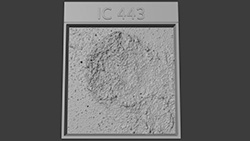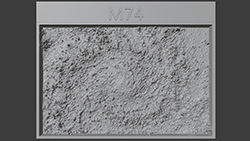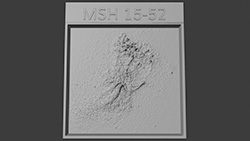CXC Home | Search | Help | Image Use Policy | Latest Images | Privacy | Accessibility | Glossary | Q&A
1
X-ray, Optical, & Infrared ImagesSonification Credit: NASA/CXC/SAO/K.Arcand, SYSTEM Sounds (M. Russo, A. Santaguida)
Three sonifications feature different objects observed by NASA’s Chandra X-ray Observatory and other telescopes. The first is MSH 11-52, a supernova remnant blowing a spectacular cloud of energized particles resembling the shape of a human hand, seen in data from Chandra, NASA’s Imaging X-ray Polarimetry Explorer (IXPE), and ground-based optical data. The second is M74, a spiral galaxy like our Milky Way. This sonification combines data taken with NASA’s James Webb and Hubble Space Telescopes as well as X-rays from Chandra. The third object in this trio is nicknamed the Jellyfish Nebula, also known as IC 443. These data include X-rays from Chandra and the now-retired German ROSAT mission as well as radio data from NSF’s Very Large Array and optical data from the Digitized Sky Survey. [Listen to the sonifications here].
2
3D Printable Files: IC 443 / Jellyfish Nebula (3D Print Credit: NASA/CXC/A. Jubett, using software by Tactile Universe/N. Bonne & C. Krawczyk & Blender)
This tactile plate is a physical relief map based on the intensity of X-ray, Radio and Optical data, depicting a supernova remnant called IC 443, or the Jellyfish Nebula. The plate features a large, raised bubble representing X-rays and radio light from hot gas and dust observed by Chandra and other telescopes. Cloud-like structures, both inside the bubble and stretching outside of the bubble to our right and upper left, are filamentary in nature, as if fingers pulled at the edges of a cotton ball. Stars, felt as raised dots, are flecked across the entire image.
3D Printable Files: M74 / Phantom Galaxy
(3D Print Credit: NASA/CXC/A. Jubett, using software by Tactile Universe/N. Bonne & C. Krawczyk & Blender)
(3D Print Credit: NASA/CXC/A. Jubett, using software by Tactile Universe/N. Bonne & C. Krawczyk & Blender)
M74 is a spiral galaxy like our own Milky Way. Oriented face-on from our vantage point on Earth, the galaxy’s sparkling arms spiral out from a raised core. The core feels vibrant and dense, crackling with activity. High-energy stars dot the lengths of the spiraling arms. Webs of dust crisscross the space between the curving arms, also known as dust lanes.
3D Printable Files: MSH 15-52 / PSR B1509-58
(3D Print Credit: NASA/CXC/A. Jubett, using software by Tactile Universe/N. Bonne & C. Krawczyk & Blender)
(3D Print Credit: NASA/CXC/A. Jubett, using software by Tactile Universe/N. Bonne & C. Krawczyk & Blender)
This tactile plate is a physical relief map based on the intensity of X-ray data of a pulsar wind nebula, which strongly resembles a ghostly hand with sparkling fingertips.
A pulsar is a highly magnetized collapsed star that rotates and creates jets of matter flowing away from its poles. These jets, along with intense winds of particles, form pulsar wind nebulae. Here, the pulsar wind nebula known as MSH 15-52 resembles a cloud set against a sparse backdrop.
Both NASA’s Chandra X-ray Observatory and the Imaging X-ray Polarimetry Explorer (IXPE) have observed MSH 15-52. Their observations revealed that the shape of this pulsar wind nebula strongly resembles a human hand, including five fingers, a palm and wrist. The blobby spot near the base of the palm is the pulsar itself.
The three longest fingertips of the hand-shape point toward our upper right, or 1:00 on a clock face. There, a small, mottled cloud appears to sparkle like embers. This cloud is part of the remains of the supernova explosion that created the pulsar.
A pulsar is a highly magnetized collapsed star that rotates and creates jets of matter flowing away from its poles. These jets, along with intense winds of particles, form pulsar wind nebulae. Here, the pulsar wind nebula known as MSH 15-52 resembles a cloud set against a sparse backdrop.
Both NASA’s Chandra X-ray Observatory and the Imaging X-ray Polarimetry Explorer (IXPE) have observed MSH 15-52. Their observations revealed that the shape of this pulsar wind nebula strongly resembles a human hand, including five fingers, a palm and wrist. The blobby spot near the base of the palm is the pulsar itself.
The three longest fingertips of the hand-shape point toward our upper right, or 1:00 on a clock face. There, a small, mottled cloud appears to sparkle like embers. This cloud is part of the remains of the supernova explosion that created the pulsar.
Return to: Listen to the Universe: New NASA Sonifications and Documentary (February 28, 2024)





















